
If there’s one modification that can alter 4x4 performance and appearance more than any other, it has to be tyres. Bolting on a fresh set of rubber has the ability to completely transform your 4x4, with nothing else than some credit card digits being swapped and a torque wrench doing a lap of your wheel nuts.
There is a problem, though, how are you meant to choose the right tyres for your rig? There are so many brands with various tread designs and price points on the market these days, and what may work for your mate’s Hilux will be absolutely awful on your Proton Jumbuck.
Not to worry, we’re here to help. In this Buyer’s Guide we’ve done most of the hard work for you, no matter what you’re after. ATs, HTs, MTs and the new-to-market Hybrid options are all listed below, so grab a coldie and see if you can find your next set of 4x4 tyres.
A note on costs:
To keep things fairly uniform on the costing side of things, we’ve set the tyre size to the commonly available 265/70R17 for all tyres, or as close to it as possible for those that don’t come in that size. Bigger tyres will probably cost more, smaller tyres will probably cost less - it’s more meant as a guide than a hard and fast price.
RUGGED TERRAIN
COOPER TIRES RUGGED TREK
Things we like
|
Not so much
|
The Cooper Rugged Trek is a 4x4 tyre range designed for drivers who frequently tackle rough terrain. The tyres are built to provide superior traction on both wet and dry surfaces, and have a unique tread pattern that allows them to grip onto rocks, sand, and mud.
The tyres are also designed to provide a comfortable ride, with reduced road noise and vibrations. The Rugged Trek range is available in a variety of sizes to suit different vehicles, and comes with a mileage warranty for added peace of mind.
ALL TERRAINS
FALKEN WILDPEAK AT3W
Things we like
|
Not so much
|
One of the most technology-filled tyres on this list, the Wildpeak has proven to be a top choice for a lot of 4WDers over the past few years. It has nifty inclusions like heat-diffusing lower sidewalls to make it an excellent tyre for towing, and stepped tread blocks, which are offset to protect the sidewall for extra rigidity when finding off-road traction.
Continuing the aggressive tread pattern, the upper sidewall is designed to mould over sharp rocks and aid traction in soft sand. They’re also an extreme weather-rated tyre, so you’re ready for the next ice-age to kick off, or even if you’re a driver who needs to venture out in the rain. 3D Canyon sipe technology is also onboard, which essentially interlocks the sipes, providing excellent wet-weather grip without sacrificing tread lug deterioration in high torque applications.
MAXXIS AT811 RAZR
Things we like
|
Not so much
|
Carrying on the aggressive tradition of the RAZR MT, the AT version looks just as gnarly and, if appearance equalled performance, these would be the tyre of choice for everybody. And frankly, “everybody” could do a lot worse. The Maxxis team threw a bunch of R&D at this tyre, and if things like three-ply sidewalls, high tensile fibres interwoven into the cap and 3D wave siping sounds like a bit of you, then you’ve found your tyre.
The former AT Bravo from Maxxis won 4X4 Australia’s All Terrain Tyre of the year back in 2019, and the RAZR is not what you’d call a backwards evolutionary step. With excellent on-road manners and off-road behaviour that’d rival a lot of well-known muddies in the soft stuff, this is a seriously top contender and should be on almost every 4WDer’s shortlist.
Muddy looks with all-terrain performance and Maxxis reliability? Yes please.
COOPER S/T MAXX
Things we like
|
Not so much
|
A tyre truly designed for Australian conditions – Cooper went into the Outback and spent three years testing this tyre to the absolute limit, the result being one undeniably tough piece of AT rubber… well, heavy-duty rubber and silica compound.
The S/T MAXX features stone-ejector ribs and an enhanced buttress design on the sidewall for increased grip at low pressures, and they feature Micro Gauge siping for extra on-road grip in inclement weather. Underneath the Y-block treads with optimised draft angles sits the proprietary Armor-Tek 3 ply construction, which sees the third top ply laid down on an eight-degree angle, which provides a 250 per cent strength increase over the standard two-ply construction.
Think of the old-school bias-ply strength and puncture resistance, but without any of the downsides. If you’re looking for a no-nonsense and ultra-tough AT tyre, don’t go past the Cooper S/T MAXX.
MICKEY THOMPSON BAJA BOSS AT
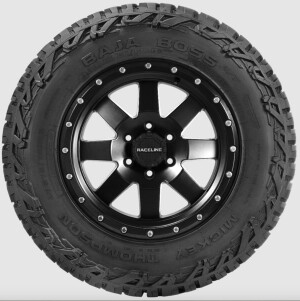
SPECS
Size Range: 265/65R17 – 37x13.5x22
Rim Sizes: 16in - 22in
Construction: LT
Price: From $475 (rrp)
Things we like
|
Not so much
|
The Baja Boss AT is the latest and greatest from tyre giant Mickey Thompson, and while they have only been on the market for a short period of time, they’ve already won legions of fans. That’s probably due to things like the asymmetrical tread design that straddles the line between aggressive off- and on-road manners excellently. Mickey Thompson reckon it offers fantastic road-holding while minimising noise, which is pretty much the gold-standard for an AT tyre.
The Extreme Sidebiters on the sidewall are 150 per cent deeper than on the previous Baja ATZ P3 tyres and guarantee low-pressure traction in the soft stuff, while the toughness department is managed by the PowerPly XD feature – essentially a 50 per cent increase in denier cord used in the plies, to provide a mammoth amount of puncture resistance.
Also worth noting is the silica-infused compound for greater wear characteristics and longer life, rounding out what has to be a shortlist tyre for just about any serious 4WD owner.
TOYO OPEN COUNTRY ATII
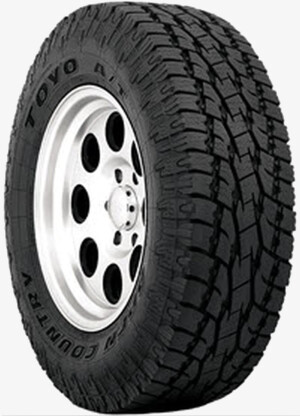
SPECS
Size Range: 215/70R15 – 285/70R17
Rim Sizes: 15in – 18in (in LT)
Construction: LT
Price: From $309(rrp)
Things we like
|
Not so much
|
The Toyo ATIIs have been around for a fair few years now and are well and truly proven as a solid performer in Australian conditions. They’re built to last with Toyo claiming they’re able to do five full laps of Australia on a single set of rubber – gotta love a brand who puts their money where their mouth is.
Off-road capabilities are enhanced with two cap plies that are built for puncture resistance and the carcass incorporates sidewall protection for when you’re bagged out on the rocks. On-road performance is beefed-up with tie bars between the tread blocks have been added to offer better braking and corner stability – features not commonly seen in off-road rubber, but welcome additions nonetheless.
While they don’t necessarily have the sex appeal of some of the more aggressive tyres on this list, if you’re after a no-nonsense, long-lasting, reliable tyre that’ll go the distance and hold its own in a fistfight with nature, give the ATIIs a once over. There are a lot of good reasons so many folks are running them.
DICK CEPEK FUN COUNTRY
Things we like
|
Not so much
|
One of the original crossover AT tyres that’s been around since before some of our readers were born, the Fun Country has been recently reinvented into a tough AT contender, and we are into it.
The sidewall is made up of three plies that are angles to increase puncture-resistance, and the offset, siped sidewall tread is designed to resist lug-tearing by spreading the load across a greater section of the tyre instead of just the lug, further aided by the 360° scalloped rib section.
The shoulder of the tyre is notched to decrease damage from rocks, while the Offset Circumferential Grooves ramp up water dispersion and traction, making this a solid choice for those chasing some functional and well-priced rubber.
FEDERAL COURAGIA AT
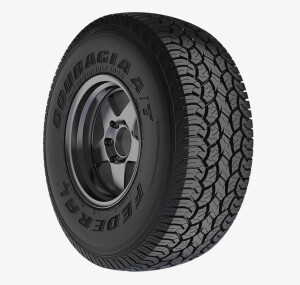
SPECS
Size Range: 195/80R15 – 285/75R16
Rim Sizes: 15in – 16in
Construction: PT & LT
Price: From $108(rrp)
Things we like
|
Not so much
|
At the budget end of town we find the Federal Couragia AT. It’s not aggressive nor does it provoke lust in the eye of the beholder, and there are precious few sizes available, but considering the price there’s quite a bit to like about this tyre.
The compound features chemically coupled silica to the rubber, which should promote a decent lifespan from these things, and the wide-angle shoulder grooves and multi-directional siping should mean they offer adequate handling in the wet.
It is worth mentioning that there have been a few instances of the tread lifting after a short amount of time on the vehicle, but most reports seem to be on heavier vehicles. Lighter 4WD and SUV owners have largely reported great things from their Couragias.
So if you’re looking to re-shoe your F250, these may not be for you, but it you punt your Sierra to work every day and over the dirt for a camping weekend a few times a year, these could be perfect.
MUD TERRAIN
Perfect for specific off-road pursuits, but not ideal on-road
BF GOODRICH T/A KM3
Things we like
|
Not so much
|
The previous iteration BFG muddies, the KM2, were a massive hit with the mud-driving public, so when the KM3 hit the market a few years back it had some big shoes to fill. And fill them they did.
The KM3 offers five-per-cent better mud traction than its predecessor thanks to the “mud-phobic bars” on the shoulder of the tyre that are designed to aid in self-clearing, allowing the rubber to bite deeper into the slop.
The sidewalls have also been beefed up to the tune of 27 per cent more toughness, mainly due to the CoreGard Max technology, which is a special mix of compound and thicker rubber in the sidewall plies.
KENDA KR29 KLEVER
Things we like
|
Not so much
|
Even though they’re the new kid on the mud-tyre block, Taiwan-based Kenda have been around for 60 years now, so it’d be fair to say they have the know-how.
While they’re a fairly basic construction – double steel belts with three-ply sidewalls – they fit the budget mould perfectly and by all reports are pretty darn impressive off-road, making them a top contender in the bang-for-buck stakes. Noise is an issue, more so when they have a few kays on them, but a little bit of howling is to be expected.
The Kendas could be a great entry-level mud-terrain for those who aren’t willing to cough up the coin for a more well-known brand. Even with the lack of refinement in some areas, they’re difficult to ignore and can’t be written off.
KUMHO MT KL71
Things we like
|
Not so much
|
The KL71 has been around for a long time now, and the Korean-built tyre is a solid and capable performer on- and off-road. Despite the angry tread design, the KL71 is surprisingly quiet on-road and grippy in the wet, which comes down to the tightly packed centre lugs, which were developed using fluid mechanics to keep the noise levels on the lower and of the scale and resistant to any aqua-planing.
Off-road, the beefy shoulder lugs keep the traction on mud and rocks plentiful; although, we’d like to see some more sidewall tread on an updated tyre, which hopefully is not too far away.
The Kumho is getting a little long in the tooth now, having been on the market since fuel was under a buck a litre, but its consistent performance, good looks and competitive pricing still make it a great choice for those looking for something a little different.
HANKOOK DYNAPRO MT2
Things we like
|
Not so much
|
The Dynapro MT2 has one of the strongest tyre carcasses we’ve see, featuring a reinforced under tread gauge, nylon reinforced belts, a high-tensile steel belt and jointless bead wire. It’s simply a beast of a tyre that’s nigh-on bulletproof when it comes to puncture resistance.
The tread pattern is very much like an old-school mud-terrain, with chunky centre lugs and uneven shoulder blocks for fast and effective self-cleaning.
However, they suffer from the same things of the muddies of yesteryear. Wet-road driving and long-trip noisiness have to be taken into consideration, but if you’re confident in your abilities to deal with aquaplaning and are happy to just turn the stereo up to drown out the road noise, then these are right up your alley.
A super-solid construction with fantastic off-road capabilities without any of the frills or fanciness? Sign right here.
HIGHWAY TERRAINS
For light off-road use only ... you wouldn't want to go too remote
BRIDGESTONE 689 HT
Things we like
|
Not so much
|
When we get right down to it, HT tyres really only need to be measured by a few criteria: How they handle the wet, how long they last and how well they bag out in the sand, and the 689 HT is no exception.
To be fair, based on those criteria alone, it’s really a pretty good tyre. While you wouldn’t buy these to do a run down the Gibb River Road, for a tow vehicle that’s only ever going to see an occasional dirt road and maybe do some beach camping a couple times next summer, you could do a lot worse.
The tread pattern is computer designed, the tread blocks are surprisingly deep at 11mm and the rounded shoulders ensure a smooth, long-wearing and practically noiseless driving experience.
It’ll get you there and back, and at the end of the day, you have to chalk that up as a win.
PIRELLI SCORPION ATR
Things we like
|
Not so much
|
To be fair, the Pirelli Scorpion is actually designated as an AT tyre, but its super-sleek tread design is way more slanted towards highway driving. And that’s not a bad thing at all. If you’re doing a lot of Outback touring where you’ll be spending 80-90 per cent of your journey on the black top or dirt roads, then these tyres start making more and more sense.
The tread features all the usual HT acumen – low noise, excellent wet weather grip, long-life – however it also is somewhat good off-road, at least until you start getting into the deep bogholes or boulder gardens, but it’s not designed or advertised at excelling in those arenas. It’s a touring tyre, plain and simple.
It really is hard to hate on an all-round performer like the Pirellis, and if you’re only an occasional off-road driver and spend a bunch of time on the bitumen, these really could be your next set of rubber.
CONTINENTAL CROSSCONTACT AT
Things we like
|
Not so much
|
Another AT that’s really an HT, the Continental ticks all the usual boxes for this type of tyre. It’s excellent in both the wet and dry, it offers great treadwear, the noise levels may as well be non-existent, and when it comes to off-road ability they’re punching at the flyweight end of the spectrum.
Except on sand that is, it’s not an overly well-known fact but once aired down, HT tyres absolutely dominate on the sand over the more aggressive MTs or ATs.
So if you’re a beach comber with little interest in driving mud or rocks, then these are actually a very good choice.
Designed for SUVs and light trucks, the sidewall, carcass and plies are all fairly strong and puncture-resistant. Sure, they’re not going to win any mud-bogging competitions; but when considered within the realms of what they’re designed for, there are impeccable reasons to lay down your cash on a set of these.
HYBRID TYRES
Is the new tyre on the market the best of all worlds?
GOODYEAR MT/R
Things we like
|
Not so much
|
Contrary to popular belief, the MTR stands for Maximum Traction Reinforced, not Mud Terrain, and the Goodyears are one of the originators (and still one of the best) of the hybrid tyre.
Featuring Kevlar reinforcement and a silica-infused rubber compound, these are the tyres for you if you’re looking for more off-road performance while giving a decent account of themselves on the blacktop.
The asymmetric tread design reportedly self-cleans incredibly well, while the stepped shoulder blocks and wraparound sidewall tread maximise traction on pretty much every surface you care to point your rig at.
Internally, the tyre has twin steel belts and the sidewalls are reinforced with Dupont Kevlar, a material that’s pound for pound stronger than steel – making them incredibly resistant to cuts and punctures; specifically, 35 per cent tougher than the previous MT/Rs, which were long a favourite of off-road drivers everywhere.
NITTO RIDGE GRAPPLER
Things we like
|
Not so much
|
The Ridge Grappler is a true one-tyre-does-it-all. Available in a huge range of sizes and well-suited to both heavy and light vehicles, it can handle the rigours of the daily commute as well as the weekend camping missions deep into the scrub. In fact, it’s even available in a two- or three-ply construction (although let’s be honest, there are few circumstances where two-ply would be the choice).
Nitto calls the thread a “various pitch” design, which essentially means it has tighter lugs in the centre of the tyre for low noise and good handling on-road, while the alternating shoulder lugs and stepped tread blocks are designed to dig deep into slick surfaces and give you the grip you need.
The sidewall patterns are different on each side of the tyre, one having a traditional look while the other features larger lugs for more grip off-road, which is pretty nifty in our opinion.
YOKOHAMA GEOLANDAR X-AT
Things we like
|
Not so much
|
The X-ATs are like the equivalent of your grandad’s axe – solid, dependable, great at what they’re designed for but won’t win any awards for being tough-looking. With that said, we know people who are on the third and fourth sets, so they’re hardly underwhelming in the performance categories.
Built with a triple-polymer compound and a host of clever tread pattern design features, they’re aimed at people who spend a solid amount of time off the beaten track but are also meant to be able to hold the road as well as, or better than, a traditional AT tyre, so it really is a fantastic tyre for those looking for off-road capability and on-road manners.
Dual sidewall treads and a wide flat profile mean that not only will the X-ATs get you there and back, you can expect some big kilometres out of them before you’ll need to swapping them out too.
HOW WE REVIEW PRODUCTS
4X4 Australia has been reviewing four-wheel drive vehicles and aftermarket products for over 40 years.
When looking for the best 4X4 tyre in Australia there are some things that are essential to make sure your vehicle stays on the road.
When we compared each of the products in the list with hundreds out there we looked at a range of all-terrain tyres metrics to determine what’s the best product across each price point.
In addition to this we also looked at thousands of user reviews and our own experience with these products to make sure our recommendations are for the best on the market.
Disclosure: When you buy through our links, we may earn a commission. We also include products that we do not earn a commission from
4X4 TYRE BUYERS GUIDE
- WHAT ARE YOUR INTENTIONS?
- TYPES OF TYRES
- WHAT TO LOOK FOR?
- PRESSURE POINTS
- TIME FOR A CHANGE
- NUMBERS & LETTERS EXPLAINED
- SPEED RATING
- LOAD RATING
With a huge variety of 4x4 tyres on the market, the decision can be overwhelming when the time comes to swipe the debit card for a set – especially when it’ll take a decent chunk out of your savings. Choose wrong and the result could be catastrophic, as using a tyre not designed for a specific purpose will limit traction and increase the likelihood of damage and puncture.
So we’ve tried to simplify things here, explaining why you need to upgrade your tyres, why stock tyres won’t cut it, the different types of 4x4 tyres, key features to look for, and why running correct tyre pressures is crucial.
WHAT ARE YOUR INTENTIONS?
BEFORE you even begin to kick the side of a tyre, scan spec sheets, research carcass construction and assess the technical differences between Highway Terrain, All Terrain and Mud Terrain tyres, it’s important to establish your real-world intentions with the vehicle.
Before buying tyres for a 4x4, the owner really needs to have a ‘hand on heart’ review of how and where the vehicles will be used,” Jeff Moorhead told 4X4 Australia. “After the owner has honestly considered the real use of the vehicle, tyre selection gets a bit easier.”
To this end, an owner should ask themselves four questions: How often will I realistically go off the bitumen? What duration of the trip will be off road? How severe will the conditions be when I do go off road? And how much weight will be added to the vehicle for off-road trips?
Once the answers to those questions are crystal clear, you can begin to narrow your focus to the type of tyre best suited to your needs.
TYPES OF TYRES
WHEN browsing aftermarket catalogues in pursuit of the holy grail of 4x4 tyres, you’re going to encounter three different types of tyres: Mud Terrain (M/T), All Terrain (A/T) and Highway Terrain (H/T). Plus, you’ll be encouraged to ditch the Passenger construction and opt for a tyre labelled with Light Truck (L/T) construction.
A tyre stamped with L/T on its sidewall will be more durable and capable of carrying higher loads than a Passenger tyre. They also feature more aggressive tread patterns, increased sidewall protection due to more ply layers, more cut-and-chip resistance, and notably more traction for non-bitumen surfaces. When you need to air-down the tyres, L/T tyres can also dip even lower than passenger tyres, making them ideal for rock-crawling.
“As the name suggests, Light Truck tyres provide a higher load-carrying capacity and are able to cope with higher pressures to help carry the weight,” Jeff Moorhead explained. “They use heavier gauge components in the overall construction of the tyre, and usually have more rubber in them and more tread depth.
“The advantages are robustness and a resistance to punctures in rough terrain, but, as always, there are trade-offs. Disadvantages are a harsher ride, an increase in unsprung weight on each corner, and on-road handling can sometimes not be as responsive.”
There’s still a place for the Passenger tyre, namely for those who travel light and prefer longer trips on the blacktop. Due to their construction, they are better on fuel economy and provide a nicer ride quality ... you’re just at greater risk of a puncture as they aren't as robust.
“As the percentage of off-road use increases, H/T, A/T and M/T tyres all have varying levels of what they are capable of,” explained Jeff Moorhead.
“For example, the dedicated regular user who is out all year round in the High Country, running with high loads and in harsh off-road conditions should probably be looking at a Mud Terrain tyre with Light Truck construction for load-carrying and durability, and three-ply sidewalls for puncture resistance.
“For a vehicle doing long-distance, gravel-road touring on more formed roads, an All Terrain tyre might be a better option. Depending on the load being carried and severity of the conditions being encountered, a Light Truck construction might be a good option.”
HIGHWAY TERRAIN
PROS
|
CONS
|
HIGHWAY Terrain tyres are typically those found on your 4x4 vehicle once it leaves the showroom floor, and they can stay there if you never leave bitumen on the hunt for remote campsites. They are designed and manufactured with a bias towards on-road comfort and ride quality, with less space between the tread blocks, more siping to improve traction, and a reinforced overlay between the steel belts to improve on-road comfort.
“(They) basically look similar to a large car tyre. They provide good, safe on-road performance, with low noise levels and good ride comfort,” Jeff Moorhead said.
A Highway Terrain typically has a more closed pattern and is heavily siped to ensure quiet operation and enhanced grip,” Jeff Newick said. “OE tyres are mostly built for a budget, smooth ride and quiet operation. They typically are not strong enough in the carcass to endure off-road situations, and the patterns are generally highway orientated.
Usually a 70/30 split (70 percent on road / 30 per cent off road), there’s definitely a place for the Highway Terrain tyre – good quality units will improve on-road handling, steering response, wet handling, braking and will generate a hell of a lot less noise than most A/T and M/T tyres. But you’ll want to swap them for more serious rubber if you intend on participating in most forms of off-roading.
MUD TERRAIN
PROS
|
CONS
|
THE construction of a Mud Terrain tyre isn’t radically different to an All Terrain, just more extreme in every sense. With deep, blocky tread patterns and durable construction, they are primarily designed to cope with harsh, rugged terrain and are usually forgiven for being noisy and harsh on road. In saying that, a new generation of muddies has raised the bar in recent years and is changing that perception.
The traditional muddie utilises clever design cues to ensure they can find grip when forward momentum seems impossible. For example, the open tread pattern digs for traction in very loose surfaces and can self-clean as it does so, increasing the chances of your set of MaxTrax remaining on the roof rack. A heavy-duty construction and bonus sidewall protection helps to prevent punctures, which is especially crucial when lowering air pressures.
“(M/T tyres feature) thicker construction of the tyre carcass, deeper tread depth and wider channels in the tread design, all for the same reasons as for A/T tyres but with more of a skew towards harsher off-road use,” Moorhead said. “These increases in thickness that help in off-road conditions have the same effects on on-road performance, but to a larger extent (compared to A/T tyres).”
The compromise is obvious. Ever been walking down the street and you hear a raucous drone coming from a passing GQ Patrol? They’re running muddies, and they’re <I>loud</I> on bitumen. If budget permits, keep a set in the shed and pop them on whenever you set off on an adventure.
“(They’re) for the person intending to do large amounts of off-roading. They will create more noise in service and will require more maintenance to ensure irregular wear does not happen,” Jeff Newick added.
ALL TERRAIN
PROS
|
CONS
|
AN All Terrain tyre sits somewhere between the H/T tyre and the M/T tyre, offering in theory the best balance for both on- and off-road driving. With a stronger construction and a more open tread pattern than H/T tyres – but not as rugged or durable as a muddie – an A/T tyre is an excellent (and popular) choice for long outback trips where a combination of tarmac, rocks, ruts and sand are on the menu.
“(They) will have a more open tread pattern, more space between the tread blocks, bigger shoulder blocks, and sometimes deeper tread. This is to provide more traction and control on loose surfaces,” said Jeff Moorhead.
Jeff Newick doubled-down on that point: “They have a more open pattern designed to assist traction in soft surfaces, whilst still providing reduced noise and wet-weather grip.”
Relatively new to the market is the Hybrid All Terrain, which has a slightly more aggressive pattern than a typical A/T tyre.
“(They have a) more aggressive pattern, to give the extra grip without going full mud,” explained Jeff Newick. “A great tyre for touring through the outback or the weekend adventurer.”
WHAT TO LOOK FOR?
WHEN buying a set of tyres, remember these three letters: TCC. This stands for Tread Design, Carcass Construction and Compound, and they’re the three areas where you’ll be able to separate the contenders from the pretenders.
“The three key elements of choosing the correct tyre are Tread Design, Carcass Construction and Compound (TCC),” Jeff Newick explained. “The tread design must suit the purpose of application, the carcass construction to withstand the rigours of off-roading, and the compound to ensure high mileage, wet-weather grip and reduced damage.”
If it’s all a bit too overwhelming, the key features of a modern tread design to look for include: flex grooves, mud scoops, release dimples and raised rubber ribs. If the tyre you’re looking at has these, then you’re already laughing. Other clever innovations include Micro Gauge Sipes, tiny cuts in tyres designed to suck water up and release on highways to prevent aquaplaning.
Also consider the tyre’s tensile strength and whether it’s equipped with ‘angle ply’ technology. A closer look at a tyre’s sidewall will also prove valuable, and scan for additional sidewall biters and extra protection from the elements.
“Tyres designed for use off road need thicker construction, deeper tread depth and wider channels in the tread to deal with the cuts, impacts, dirt, mud, stones and general rigours of off-road driving,” Jeff Moorhead told 4X4 Australia.
“This thicker construction is not ideal for some on-road and general handling type properties. Thicker construction increases rolling resistance and reduces fuel economy, generally causing a harsher ride, (and) possibly reduced wet on-road performance. Deeper tread depth will negatively affect the way a tyre stops and turns because all of that tread rubber has a tendency to bend or fold over under high stress. And there is an increase in unsprung weight.”
As with any important purchase – especially one that plays an integral role in returning you home safely – it’s important to do plenty of research. Remember, not all tyres are created equal, so while an attractive price tag might seem enticing, it may not have as much research and development behind it.
Plus, a low-cost option may not be built for Australian standards and can leave you stranded with a lack of warranty and no after-sales support. Interestingly, some tyres can sit in a warehouse for up to five years, so there’s no harm in asking how long they’ve been there.
The easiest way to avoid all of these headaches is to buy from a reputable brand with local after-sales support.
PRESSURE POINTS
EXPERIENCE will count for plenty when the time comes to modulate tyre pressures, as different track situations will dictate what tyre pressures to run. And it’s critical that you get this right, as running pressures too high or too low in specific circumstances could result in damage and even a complete blow-out.
“Tyre pressure is critical to get optimum tyre performance both in terms of handling/traction and long tyre life,” Jeff Moorhead said. “If you’re only running on highway, with a basically standard vehicle on OE tyre specs, the OE placard pressure is recommended.
“However if you have undertaken any vehicle modifications, we strongly recommend loading the vehicle to its full running or touring weight (all the gear) then head to the nearest weighbridge and get a reading done on total weight as well as the axle loads, front and rear.
“With the weight readings in hand, contact your tyre retailer or tyre manufacturer and get advice on the best pressures to run for your vehicle.”
In action, a rough guide is to go between 18 to 24psi for firm sand, and down to 14/15 to 20psi for very soft sand, mud or rocky roads. Sometimes you may need to drop the pressure further to increase the tyre’s footprint, but always keep speed below 40km/h when aired that low.
As mentioned, running incorrect pressures can be detrimental to the survival of the tyre. Underinflation can shorten tyre life, compromise handling and cause outright tyre failure when you least want it; overinflation can also compromise handling and shorten tyre life.
“When running very low pressures in rugged, slow off-road conditions, it’s critical the tyre pressures are put back up to normal running pressure before any higher speeds are attempted,” Moorhead added.
Jeff Newick summed it up when he told us: “Having the correct pressures for each situation is critical to ensure correct grip, reduced damage and good handling of the vehicle on different surfaces.”
In fact, Dean Mellor took an in-depth look at the importance of running correct tyre pressures earlier this year, as part of our ‘How To 4x4’ series, and the video can be found on the 4X4 Australia YouTube channel.
TIME FOR A CHANGE
A TYRE needs to be replaced when it has worn down to the treadwear indicators (around 2mm remaining is a good time to swap them over), or they start to chip, crack or sustain any irreparable damage. It’s also important to keep an eye on the tyre’s block edges, and if there are any raised edges developing it could indicate that a wheel alignment is required. As a rule of thumb, a wheel alignment should be conducted every six to 12 months, or every 10,000km, unless the vehicle is pulling to either side ... of course.
A quick walk-around on big trips to scan for wear and tear pays dividends, and get the experts at your local tyre shop to scan them once they approach around five years of age.
NUMBERS & LETTERS EXPLAINED
ALL the relevant information including measurements and load ratings are written out on every tyre’s sidewall. All those numbers and letters can be mind-fuddling without knowing what they mean, so we’ve broken it down using this example: 265/65R17 100T
- 265 = section width (in millimetres)
- 65 = sidewall aspect ratio (as a percentage of width)
- R = tyre construction (in this case, radial)
- 17 = rim diameter (in inches)
- 100 = load rating (800kg, explained below)
- T = speed rating (190km/h, explained below)
SPEED RATING
A SPECIFIED speed rating advises the maximum permitted speed of said tyre. In the above example – and using the table below as reference, the tyre has a speed rating of 190km/h. For safety reasons, it’s recommended to never exceed the max speed rating.
SPEED RATING MAX SPEED
| SPEED RATING | MAX SPEED |
|---|---|
| N | 140km/h |
| P | 150km/h |
| Q | 160km/h |
| R | 170km/h |
| S | 180km/h |
| T | 190km/h |
| U | 200km/h |
| H | 210km/h |
| V | 240km/h |
LOAD RATING
A LOAD rating designates how much weight a tyre is designed to carry when operating at its maximum speed rating and inflated to maximum pressure, as the tyre’s load carrying capacity will decrease with reductions in pressure. For example, a 265/65R17 100T has a load rating of 100, which translates to a maximum permissible load of 800kg. Remember, it’s illegal to install tyres with a lower load index than the vehicle manufacturer’s original tyre.
| INDEX NUMBER | MAX PERMISSIBLE LOAD |
|---|---|
| 60 | 250kg |
| 70 | 335kg |
| 80 | 450kg |
| 90 | 600kg |
| 100 | 800kg |
| 110 | 1060kg |
| 120 | 1400kg |
| 130 | 1900kg |

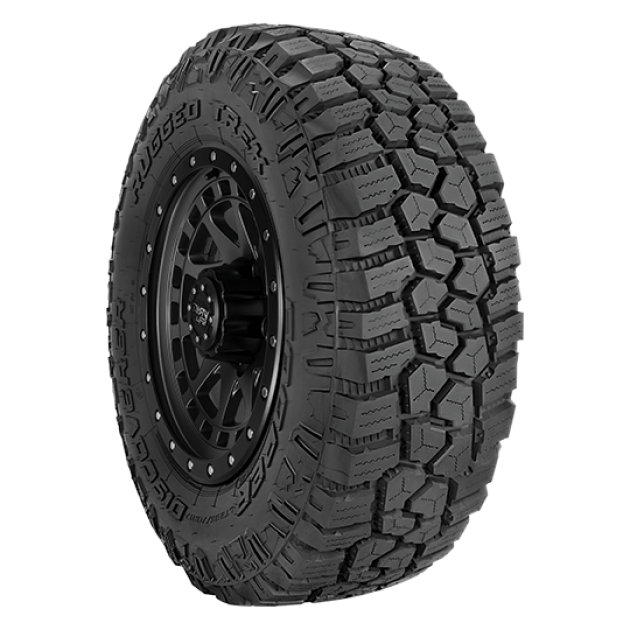



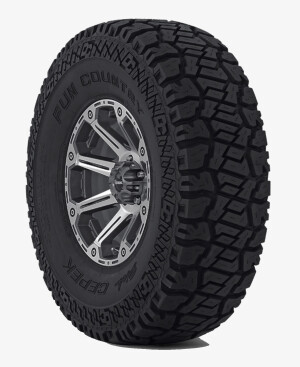
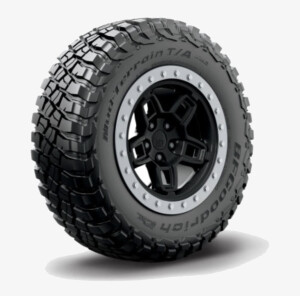
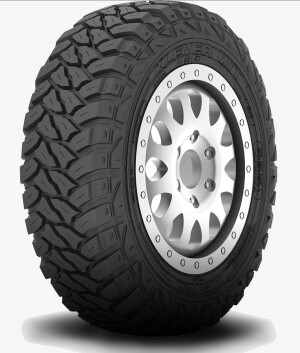

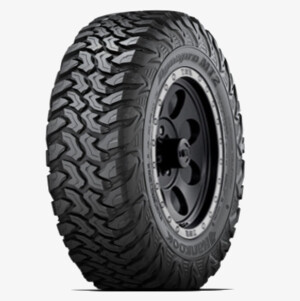

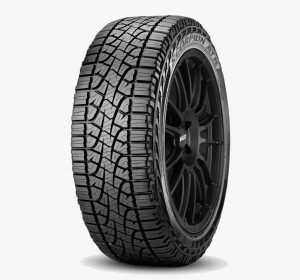

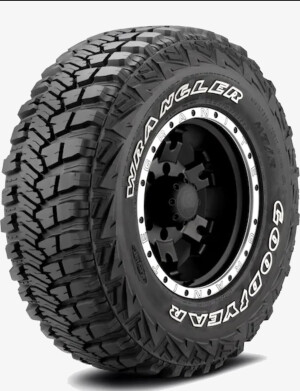
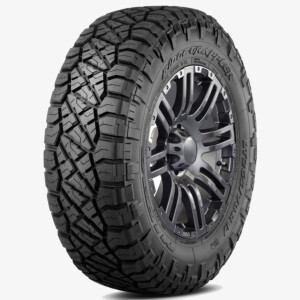

COMMENTS